How to Do Market Sentiment Analysis? 6-Steps Guide & Nvidia Example
Table of contents
In January 2025, Nvidia experienced a huge market sentiment drop. Due to the reveal of the Chinese AI language model DeepSeek, Nvidia’s shares plunged by 17%. Moreover, the company experienced a massive spike in negative mentions, mostly from non-social media sources. According to my market sentiment analysis, the number of Nvidia negative mentions increased by 214% within a week! If you want to learn how to do such an analysis, this article is definitely for you!
Market sentiment analysis can refer to two spheres: PR & marketing and financial markets. Regardless of the context, it measures public opinion and emotions toward a brand, market, or asset. In general, market sentiment analysis aims to help make better decisions based on real-time data.
What is market sentiment analysis?
The answer to the question of what is a market sentiment analysis depends on the context:
- PR & marketing context
Market sentiment analysis measures public opinions about a brand, topic, or the whole market niche by tracking online discussions and categorizing brand mentions as positive, negative, or neutral.
Understanding market sentiment helps to manage brand reputation, discover trends, and respond promptly to potential crises. - Stock market & trading context
Market sentiment analysis refers to the overall mood of investors towards a particular asset or market, which can impact potential price movements.
By understanding whether sentiment is bullish (positive) or bearish (negative), traders can make more reasonable investment decisions.
Conduct a comprehensive market sentiment analysis!
Both spheres may seem quite distant in the first blink of an eye. But in fact, they are more interrelated than you think:
- Understanding public opinion and emotions surrounding a business or market can be valuable for investors and traders.
- According to Daniel Kahneman’s (the winner of the Nobel Prize in Economic Sciences) Prospect Theory, people react to changes in gains and losses based on short-term predictions and emotions.
- In other words, most financial decisions are driven by emotional biases, and we often take irrational actions.
- Understanding these emotions more deeply gives you a strong advantage over other traders. All in all, one man’s loss is another man’s gain.
So, while this article focuses on the PR and marketing context of market sentiment analysis, understanding how public sentiment shapes brand reputation can provide an edge in investment strategies.
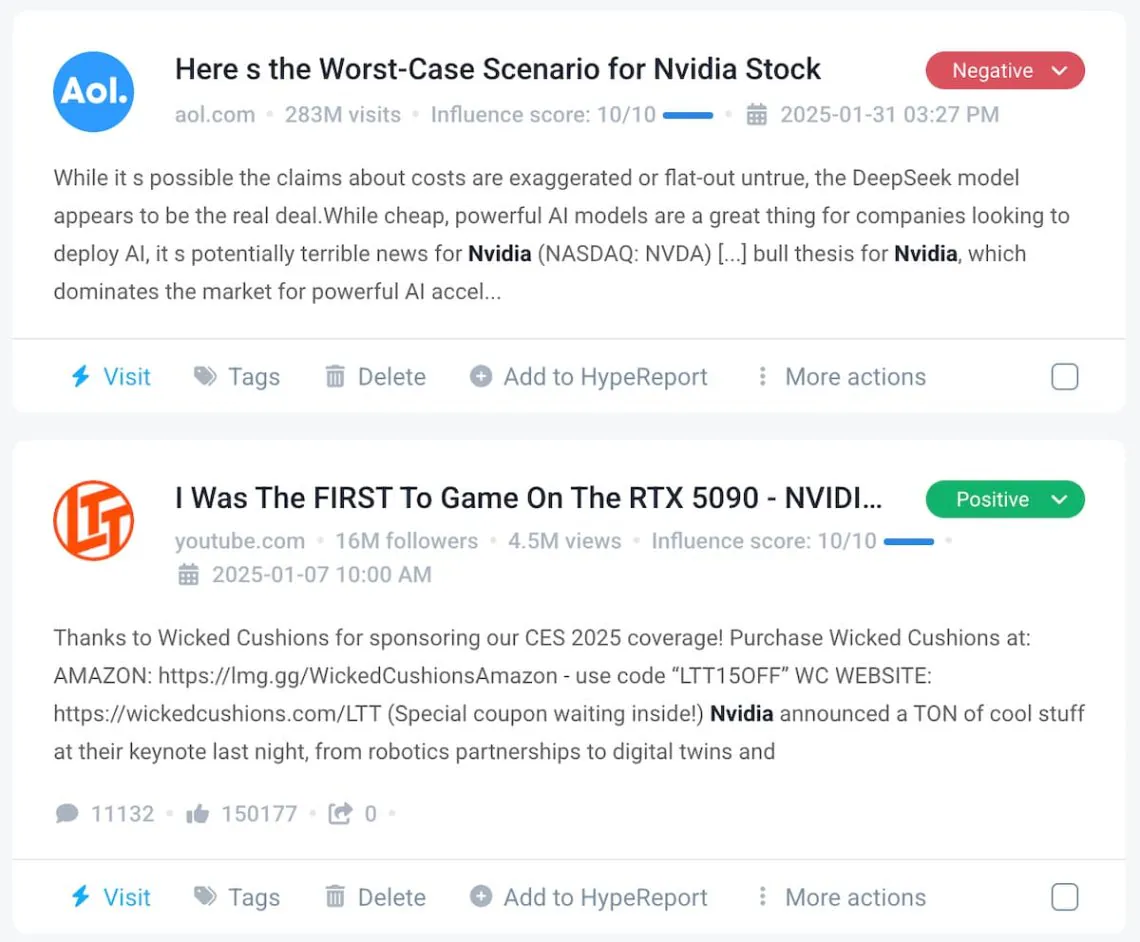
Discover positive & negative mentions for any keyword!
How to do market sentiment analysis?
The most efficient – and the only reasonable – way to do a market sentiment analysis is by using dedicated sentiment analysis tools.
Such tools:
- Can process thousands of mentions in just seconds coming from multiple sources, including social media, news sites, video platforms, forums, blogs, podcasts, and more.
- Are equipped with dozens of sentiment indicators and metrics that allow you to assess your market sentiment quickly and accurately.
- Use and develop powerful AI features that allow you to dig as deep into emotional data as it’s possible and, for example, identify more nuanced human feelings like admiration, anger, etc.
Moreover, AI-powered sentiment analysis tools can:
- Identify the specific topics driving sentiment,
- Track sentiment trends over time,
- Translate raw data into actionable insights.
All that serves to take better marketing & PR efforts, manage crises, and make reasonable financial decisions.
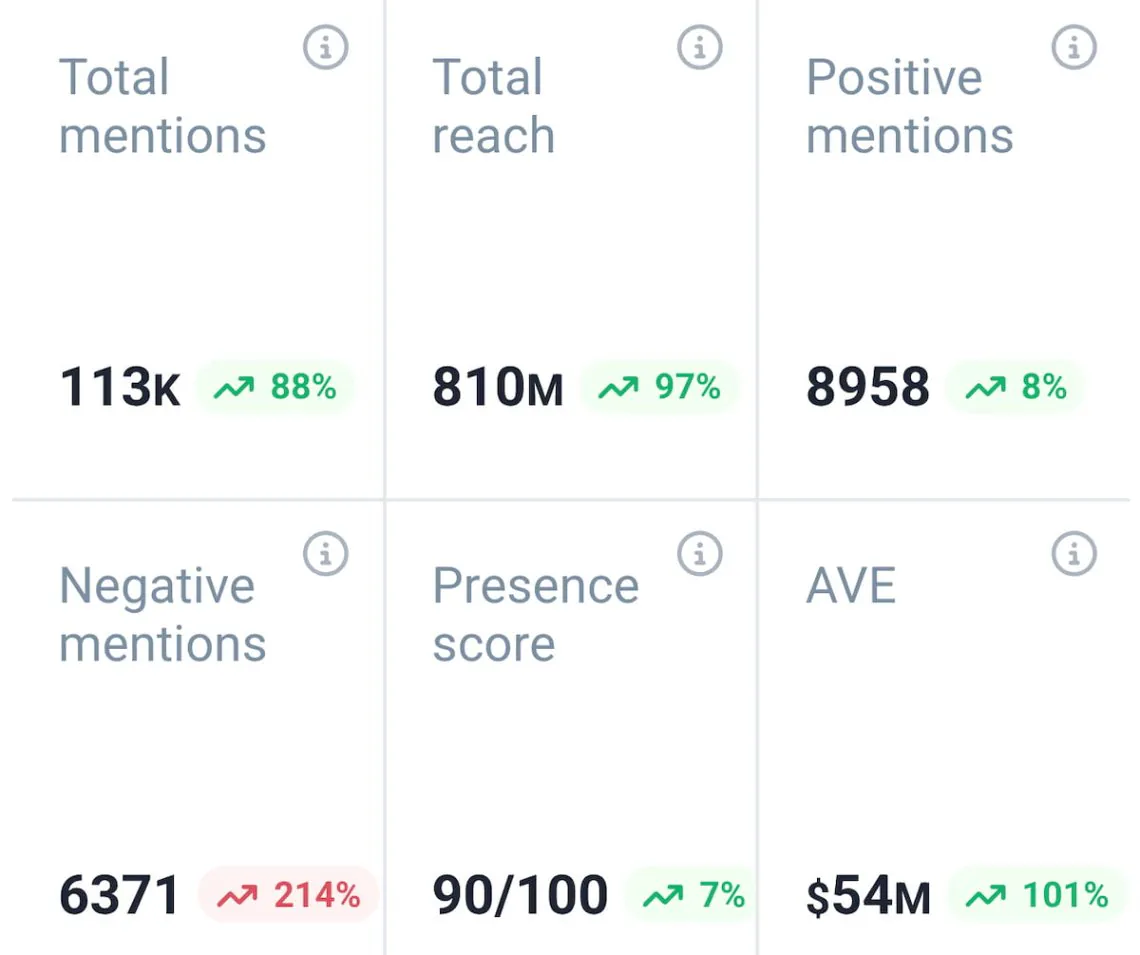
To be fair, it’s worth mentioning that these tools are not perfect.
Even though they are getting better at understanding different contexts of human language, they still make mistakes. Let’s take a review like this:
“Fast delivery – only took 3 weeks for my ‘express’ order to arrive!”
Trust me, every – even the most sophisticated – sentiment analysis tool would classify the following comment as positive.
What’s the solution to that problem?
It’s simple! Merging human and artificial intelligence!
Try the best market sentiment analysis tool!
Market sentiment analysis example
Okay, enough theory! Time to show you how you can make a market sentiment analysis in practice:
- We’ll analyze market sentiment for Nvidia – one of the most valuable tech companies in the world.
- We’ll use Brand24 – one of the best AI-powered media monitoring & sentiment analysis tools.
Step 1: Set up the monitoring project and collect data
The first thing we must do is to create a project to collect all the necessary data. The whole process takes less than ordering coffee in your favorite cafe.
Visit the brand24.com and sign in for a free 14-day trial. You can also do it by clicking the button below.
Set up your monitoring project and do the market sentiment analysis fast!
Next, enter a keyword to track. It can be a brand name, the whole market niche, a hashtag, or any other keyword you want to analyze.
In our example, I entered “Nvidia”.
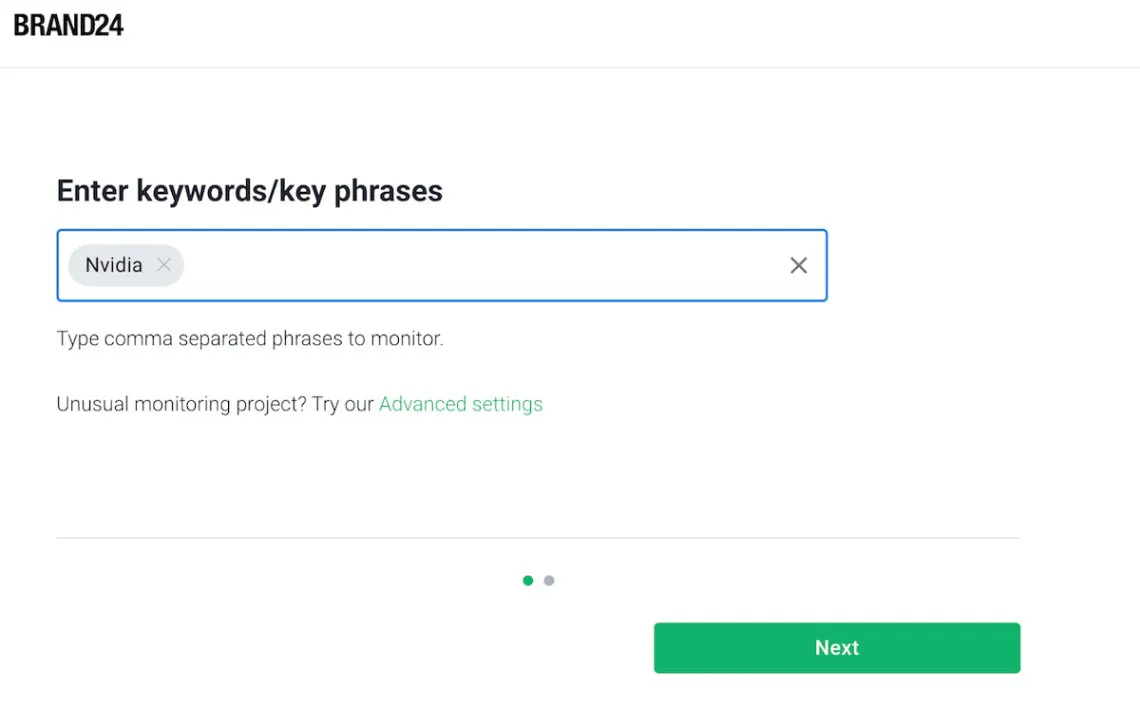
Next, you’ll need to select whether you want to collect mentions from one language or all available languages. Click “Create Project”.
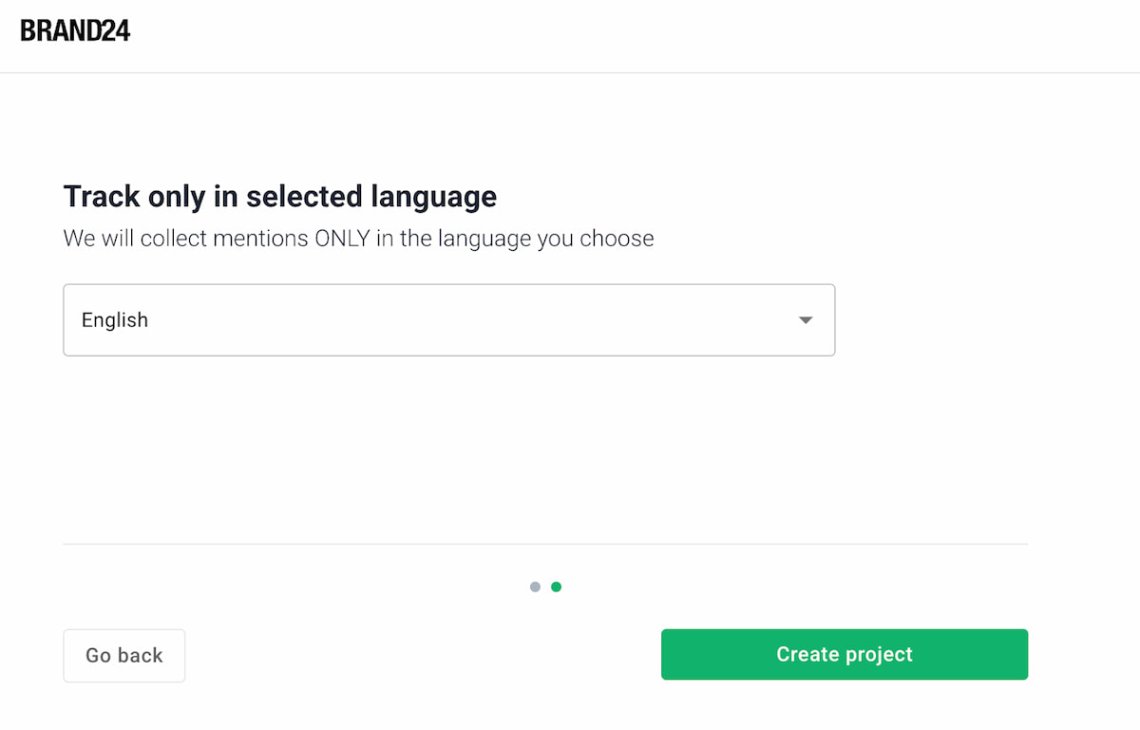
Afterwards, you’ll see a screen informing you that Brand24 is searching the internet to create a database of mentions about your brand, product, or subject.
A few seconds later, your database will be ready. Brand24 will continue to gather mentions in the background.
My good advice is to wait a little bit to let the tool find all the mentions. Meanwhile, you can explore its features.
The first view you’ll see is a Mentions tab.
Here, you can adjust your view with the number of less or more advanced filters, i.e.:
- Sources of mentions
- Sentiment of mentions (positive, negative, neutral)
- Influence score
- Intent
- Author
- Geolocation
… and many more!
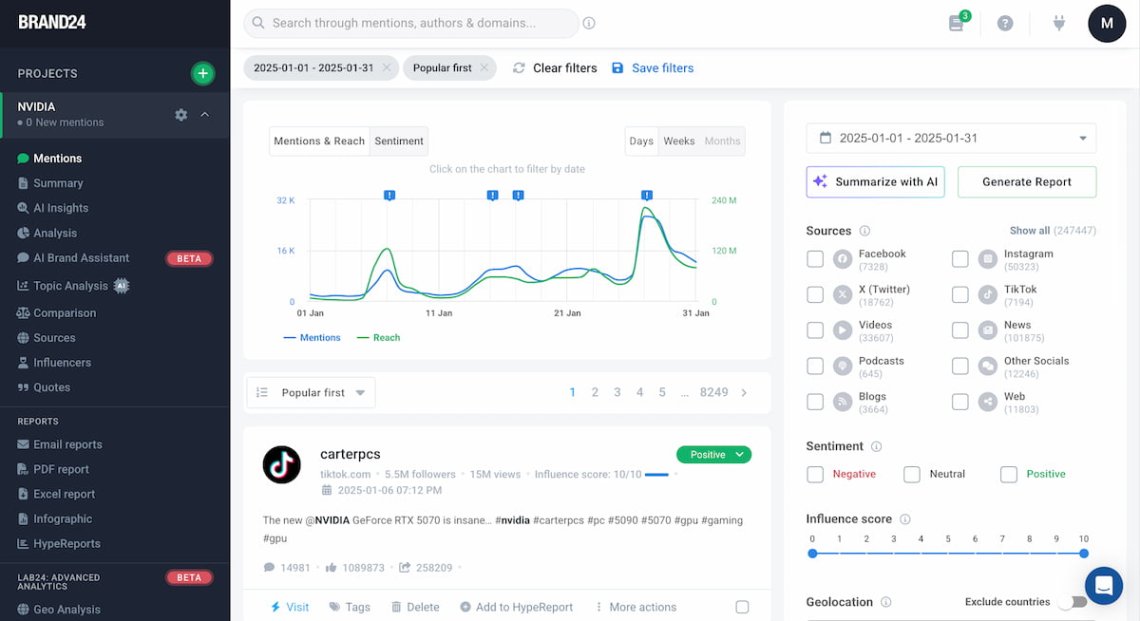
Conduct a comprehensive market sentiment analysis!
Step 2: Check the sentiment breakdown
After this short but necessary setup, it’s time to start your market sentiment analysis from a bird’ s-eye view.
For now, we will stay on the Mentions tab.
In the center, there is a chart presenting the trend of your brand mentions in a chosen period. You can switch the chart’s view from “Mentions & Reach” to “Sentiment”.
The green line presents the trend of positive brand mentions, while the red one indicates the negative sentiment trend.
Let’s check what it looked like for Nvidia in January 2025.
As you can see, the company’s sentiment was mostly positive (except for one huge spike in negative mentions; we’ll focus on it soon).
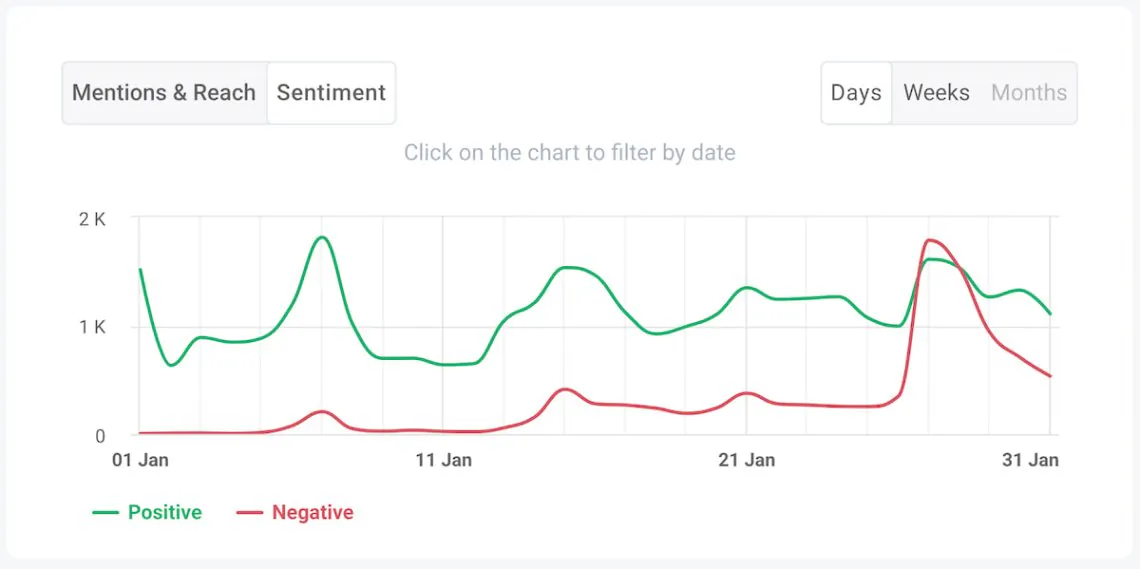
Okay, but what exactly does “mostly” mean?
To discover it, we should switch the view to the Analysis tab.
It presents a set of metrics, including market sentiment indicators such as the Sentiment breakdown.
This semi-circular graph visualizes the positive-to-negative sentiment ratio. Once you click on the chart, you’ll see the volume of positive and negative mentions, as well as their total share.
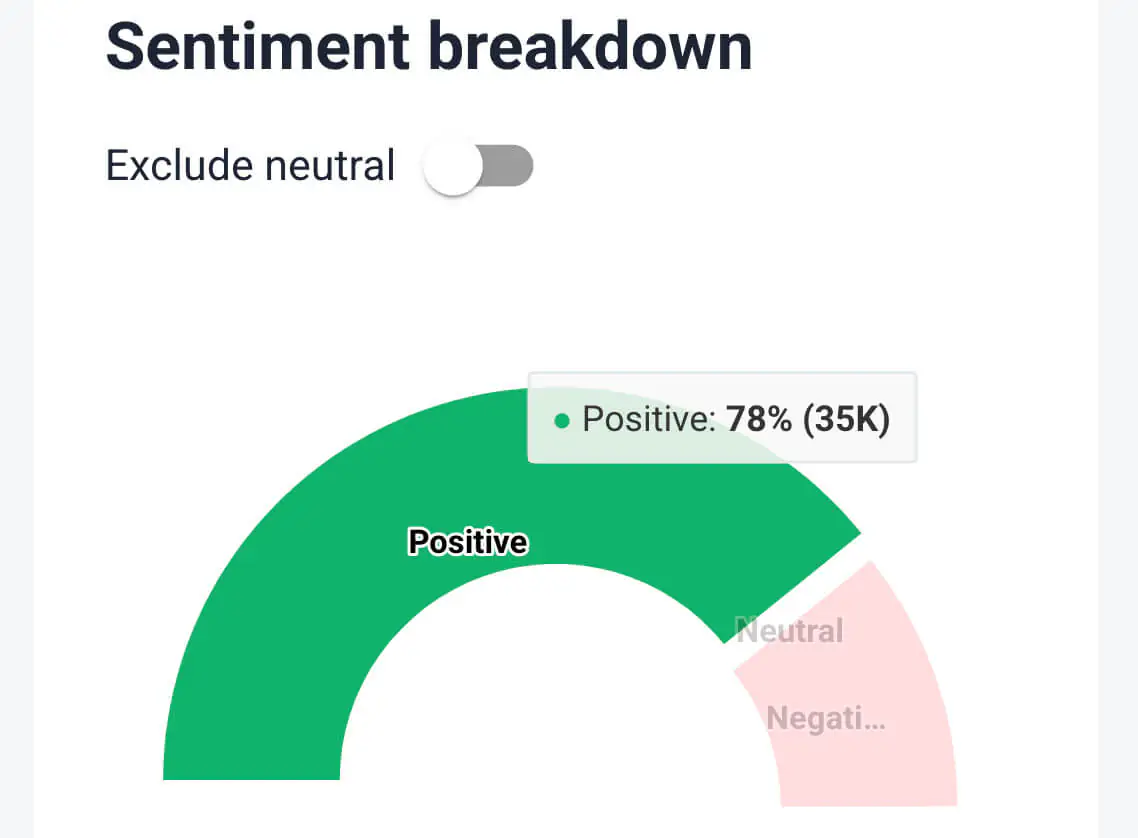
Check the sentiment breakdown for a brand or a market!
Nvidia was mentioned positively around 35,000 times, translating to a 78% positive sentiment share. That’s an astonishing result!
It could have been even more astonishing if not for that unfortunate spike in negative mentions.
Let’s see what caused it.
We should return to the Mentions tab and see the “Mentions & Reach” chart.
The sudden spike in negative mentions occurred on January 27th. You might have noticed an exclamation mark pointing to that date – or, more precisely, to the anomaly.
This Brand24 feature is called the AI Anomaly Detector. As its name suggests, it discovers any unusual behavior in your tracked project (like a sudden spike in negative sentiment).
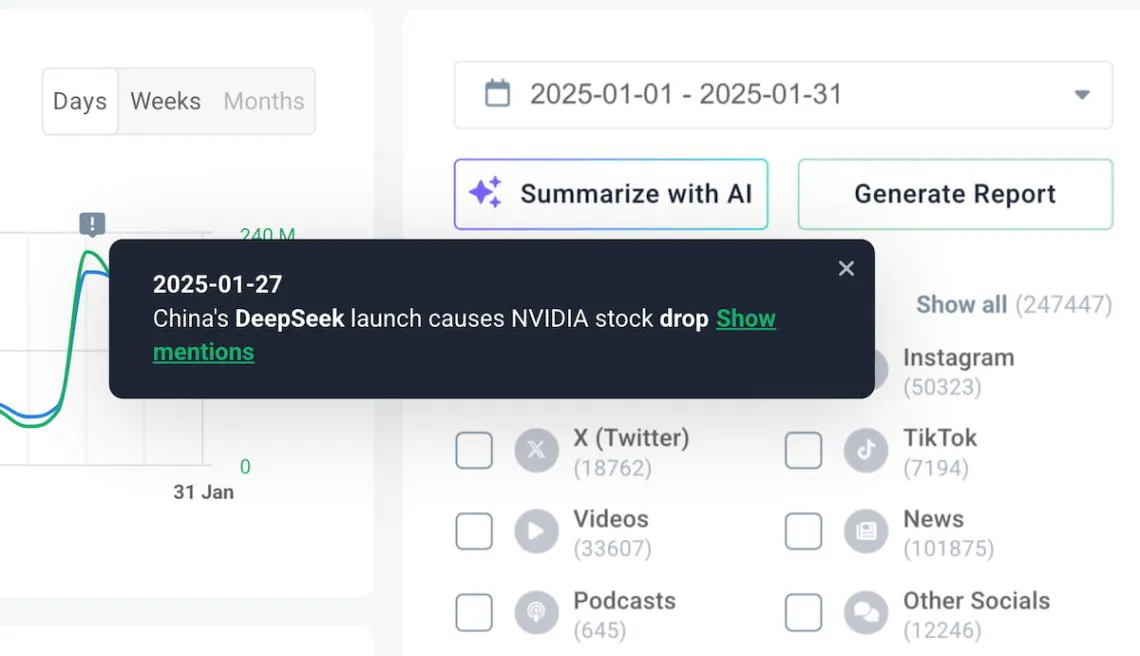
Whenever it finds something unexpected, the Anomaly Detector searches for the most possible reason and presents it as one or two sentences.
It can also show you all the mentions that caused the anomaly.
The 27th January Nvidia anomaly was caused by the reveal of DeepSeek – the relatively cheap Chinese AI model that has shaken financial markets.
As a leading supplier of AI hardware and software, Nvidia suffered not only a huge drop in stock prices but also a decline in its brand reputation.
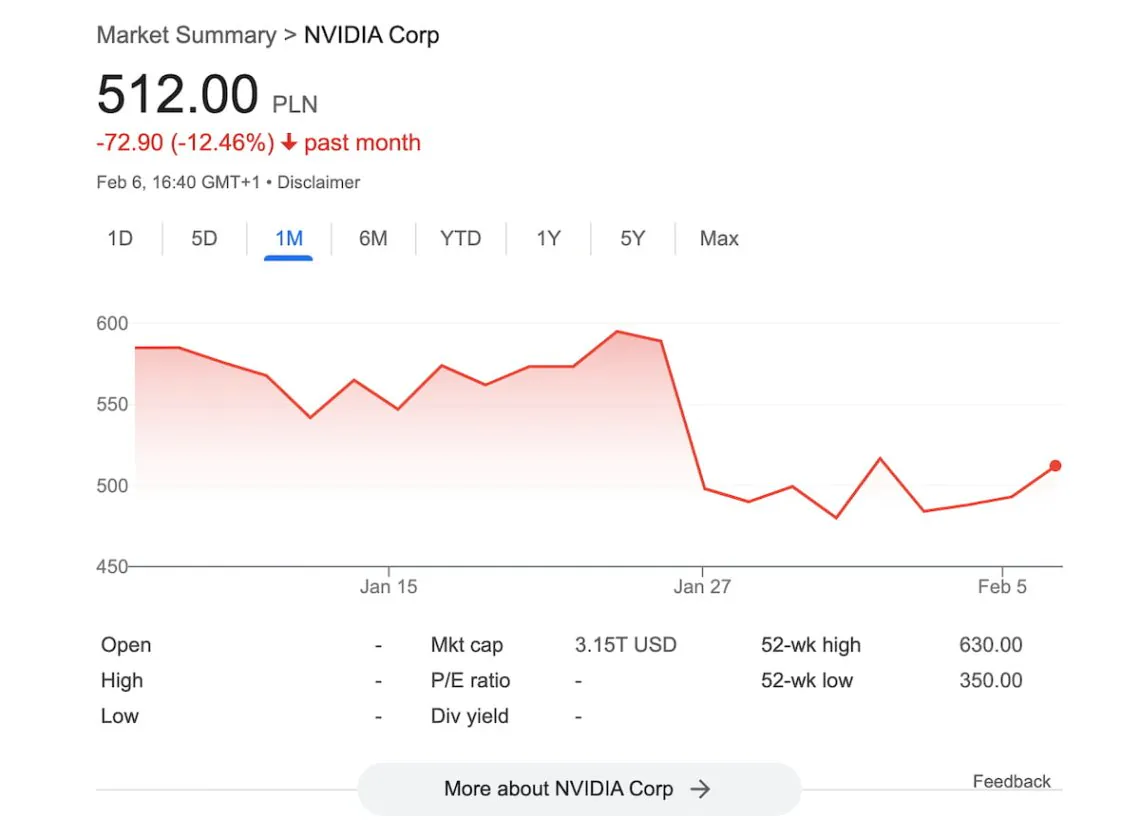
Try Brand24 – the best market sentiment analysis tool!
Step 3: Discover the exact emotions
Okay, it’s great to know whether public opinion positively or negatively perceives a given brand or market. But emotions are generally much more nuanced than “good”, “bad”, and “average” 😉
In practice, the more detailed insight into these feelings, the more accurate your market sentiment analysis becomes and the more accurate decisions you can make.
Fortunately, Brand24’s AI Emotion Analysis can dive deeper to uncover six specific emotions hidden behind positive and negative sentiment:
- Admiration
- Anger
- Disgust
- Fear
- Joy
- Sadness
As shown below, Nvidia’s detailed emotion analysis broke down positive and negative mentions into more granular categories.
What conclusions can you draw from such insights?
For example, while Nvidia received an overall high percentage of positive mentions, most of them expressed admiration rather than just joy.
This suggests that users weren’t just happy about Nvidia – they genuinely respected the company for its innovations and industry leadership.
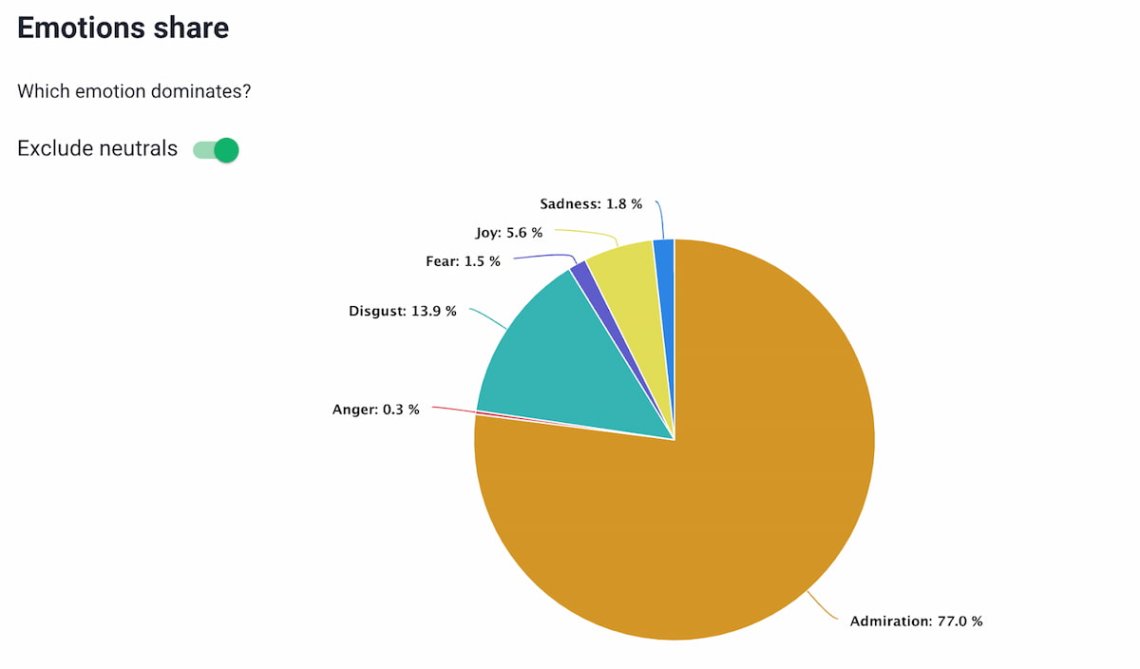
Discover the detailed market sentiment analysis with the AI-powered tool!
Step 4: Check the emojis
According to Sixth City Marketing, there are over 10 billion emojis used every day around the world. That’s over 7 million emojis per minute!
Analyzing them is an extra value for understanding your market sentiment, as their main purpose is to express or emphasize feelings.
Doing so in Brand24 is super simple. Go to the Analysis tab and scroll the dashboard to the bottom.
You’ll see the matrix presenting the most popular emojis used in online mentions.
The larger and closer to the center the emoji is, the more frequently it is used when mentioning your tracked keyword.
In our Nvidia example, I narrowed the date range to the January 27th only. The emoji matrix was dominated by emojis, indicating that DeepSeek’s reveal was a shocking move for most market participants.
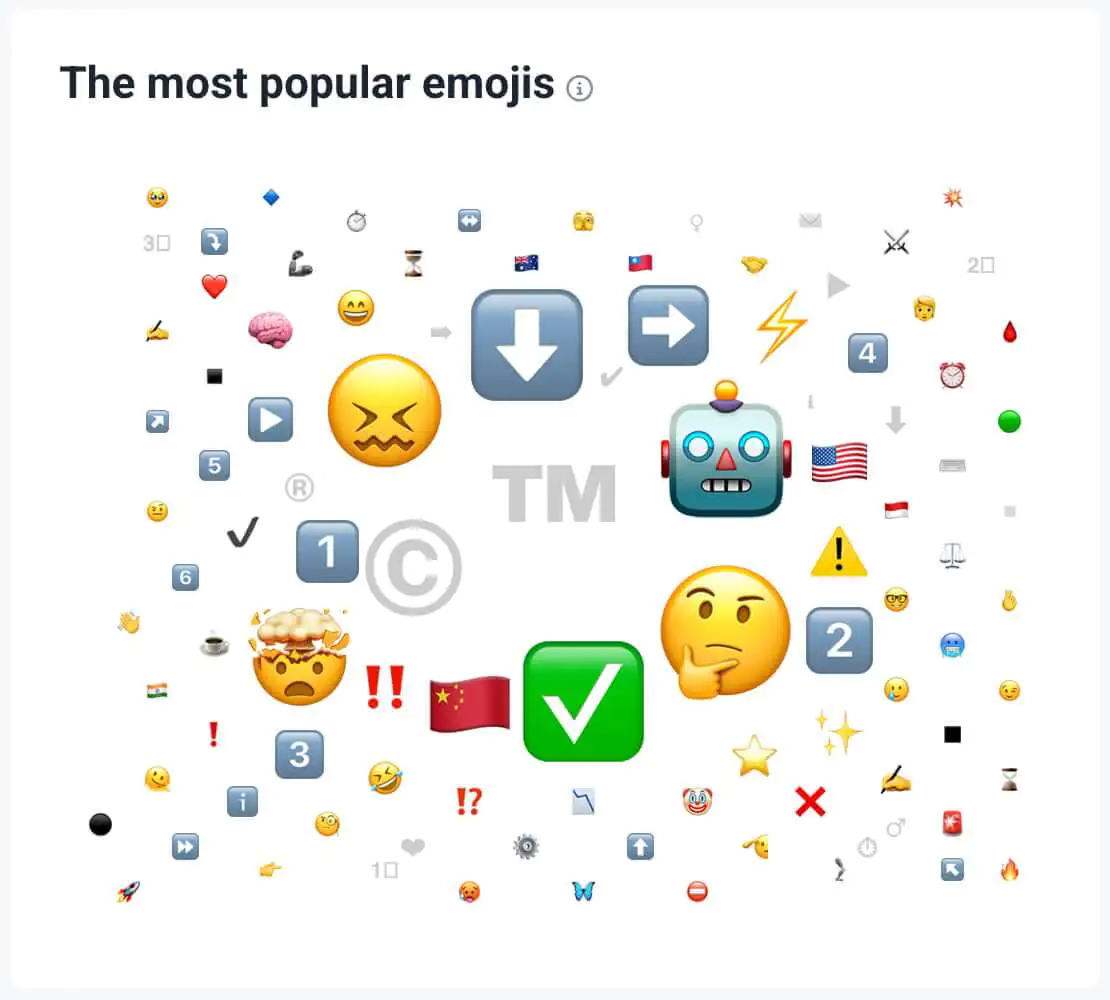
Try the best market sentiment analysis tool!
Step 5: Dive into topics
Another feature that can help you measure market sentiment even more comprehensively is an AI Topic Analysis.
In short, the Topic Analysis identifies wider thematic patterns within the collected mentions and clusters them.
What’s the benefit for you?
Instead of analyzing sentiment and emotions in isolation, you can see people’s attitudes toward particular topics. This feature also allows you to check the popularity of different aspects of your business.
For example, in January 2025, the most important topic in discussions around Nvidia was not DeepSeek and the stock market but the gaming hardware produced by this company.
It was responsible for nearly a third of Nvidia’s online mentions.
The stock market analysis was “only” the third most popular topic, responsible for less than 18% share of voice.
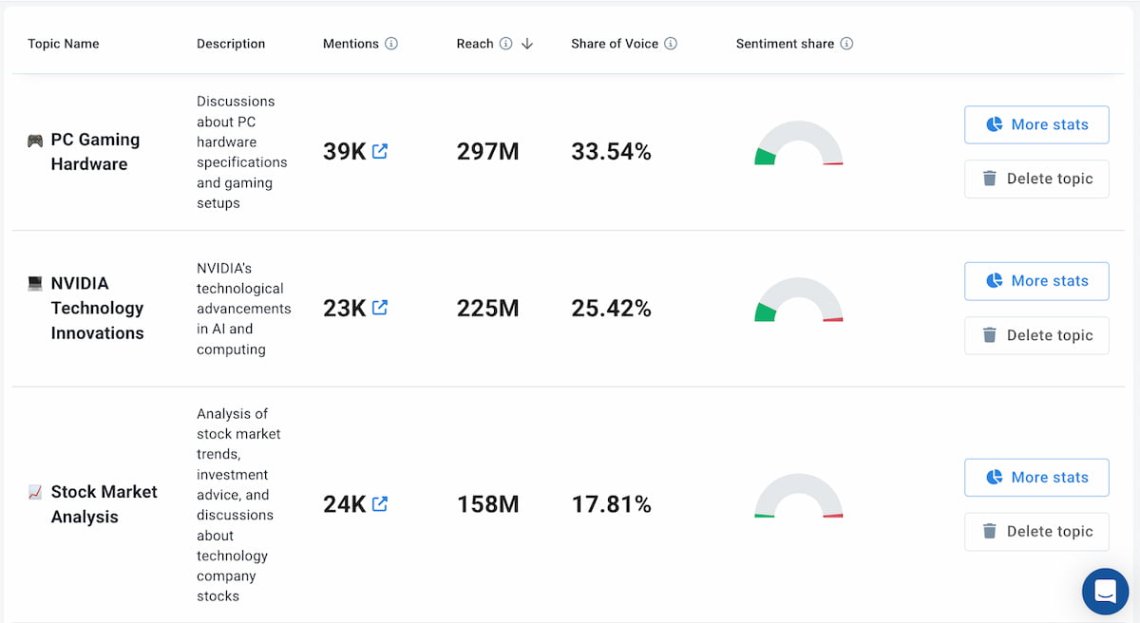
Try the best market sentiment analysis tool!
However, to be fair, the results were completely different when I changed the date range to analyze the most popular topics in the week following the spike in negative Nvidia mentions.
The AI & stock market discussions definitely dominated Nvidia-related conversations.
The conclusion?
While overall sentiment provides a valuable snapshot, understanding the specific topics is crucial for accurate market sentiment analysis.
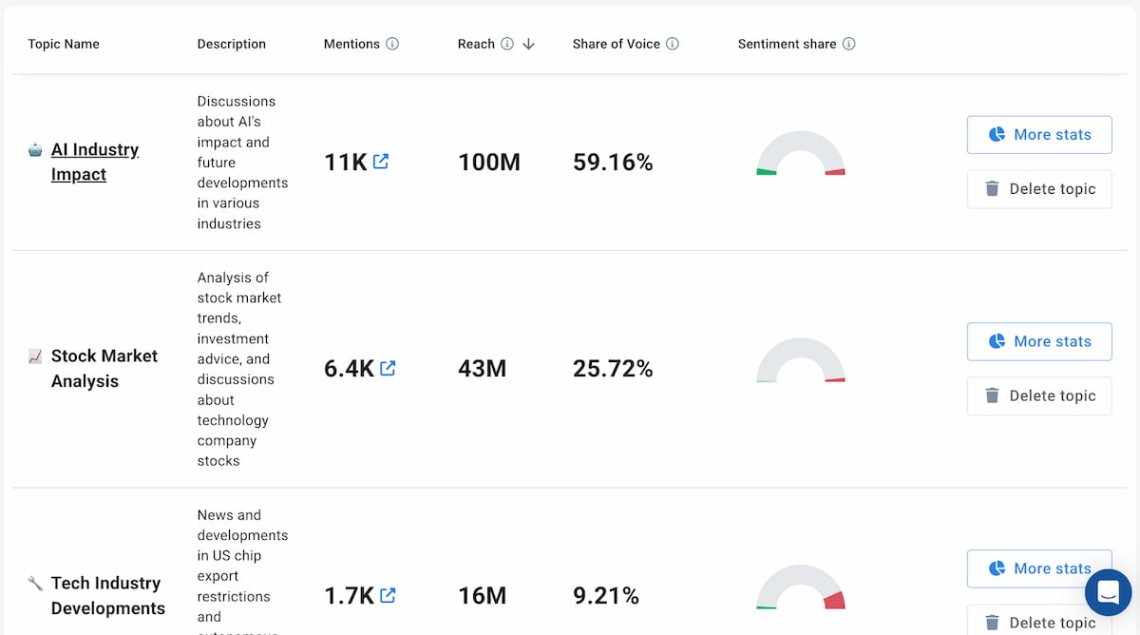
It leads us to the final step in the market sentiment analysis.
Let Brand24 to the AI-powered topic analysis for any market!
Step 6: Track the sentiment over time
Tracking sentiment over time is absolutely crucial. It transforms a static understanding into a dynamic one.
A single snapshot can be misleading because it is influenced by temporary events or fleeting trends.
Monitoring sentiment trends over days, weeks, months, or even years allows you to silence emotions (that can push you to take unreasonable actions) and draw data-driven conclusions.
This approach allows you to identify patterns, anticipate potential crises, and measure the long-term impact of your marketing efforts, product launches, or investment decisions.
The Brand24’s Compare periods feature serves exactly that purpose.
You only need to select the periods to compare. So, let’s do this for Nvidia!
Comparing the mentions from January with those from December 2024, it is clear that Nvidia’s popularity rose dramatically at the beginning of the year.
The only negative trend you can find is the share of negative mentions (from 3% to 5%). Is it really something Nvidia should worry about?
I don’t think so.
Nvidia is such a huge brand with a strong market presence that such a fluctuation shouldn’t cause too much harm. Of course, Nvidia must keep its finger on the pulse.
But there’s no reason for panic.
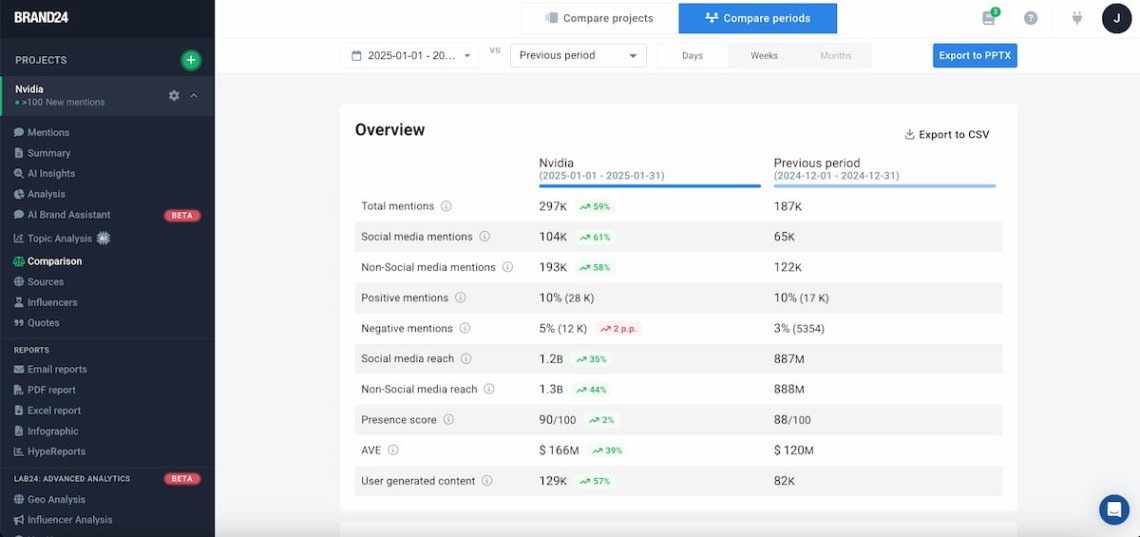
Try the best market sentiment analysis tool!
Conclusion
Market sentiment analysis is a really powerful tool that helps brands and investors understand public perception and market trends.
By tracking online mentions and emotions, brands can manage their reputation, respond to crises, and make data-driven decisions.
Nvidia’s case demonstrates how a single event can trigger emotions drastically influencing market sentiment and stock prices.
In such a situation, relying on a clear, data-backed analysis is the best way to avoid making emotion-driven decisions.
AI-powered sentiment analysis tools like Brand24 simplify this process, allowing users to analyze thousands of mentions in seconds.
They also provide deep-down insights by detecting specific emotions, identifying trending topics, and tracking sentiment shifts over time.
Final thoughts:
- Market sentiment refers to PR & marketing, as well as investment contexts.
- AI-powered tools make sentiment analysis faster, but human oversight is a must to ensure accuracy.
- Regular sentiment monitoring is key to understanding the real impact of single events on the overall market sentiment.
Sign up for a 14-day free Brand24 trial and start your market sentiment analysis now!





